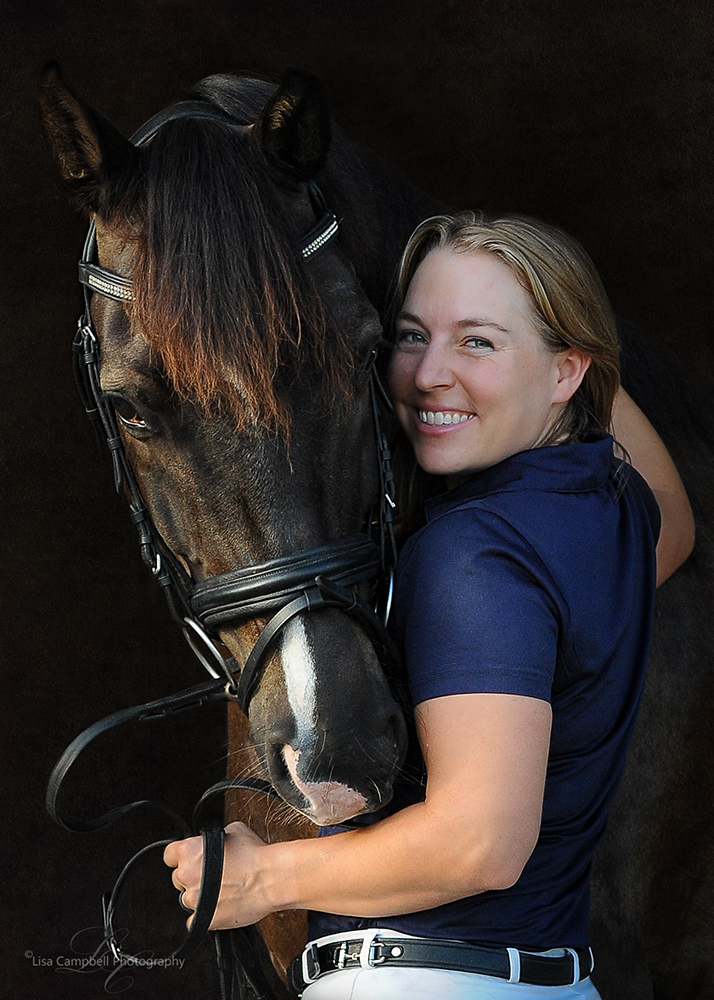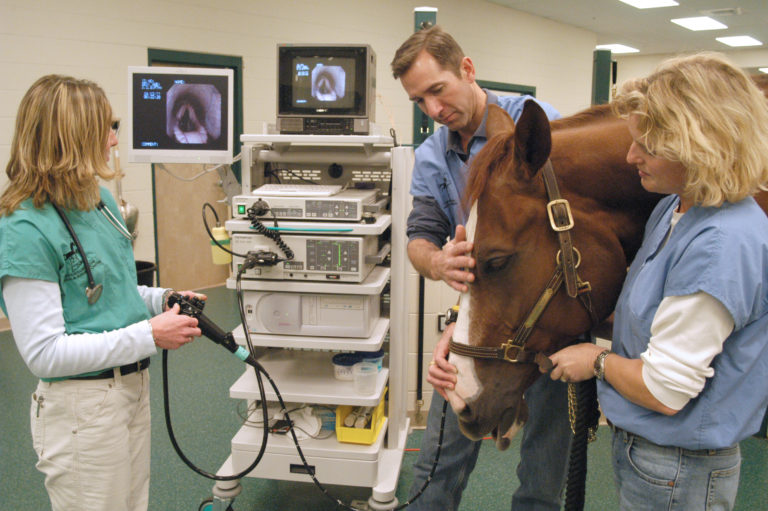One of the best pieces of advice I received as an aspiring trainer was to sit on as many horses as possible. I do believe that theoretical knowledge about dressage is extremely important but there is no substitute for practical experience. The hours of time spent in the saddle on various horses just trying and failing and trying again is what really creates a rider. However, you must be open to the education presented to you from many different, and sometimes surprising sources.

For riders, and, especially for aspiring trainers, I wish you to approach each and every horse with humility, an open mind and an open heart. Every horse has a lesson to teach you. Make it your mission to discover what that lesson is. This idea of approaching all of life’s situations with a growth mindset can drastically change your perspective, not only on your riding, but on life as well. We have a responsibility to improve each and every horse we sit on, whether that means teaching a young, green horse how to accept the bit or helping an old school horse to move a little more freely. Stay rooted in this purpose. As a foreign weight upon the horse’s back, we owe it to him to teach him how to move in a way that minimizes stress upon his joints and this includes educating him how to lift his back to more comfortably carry the rider.
C.S. Lewis wrote “Humility is not thinking less of yourself; it is thinking of yourself less.” Being humble makes you teachable. It makes you open to learning the lessons presented before you. By opening yourself to education, you are truly able to make your focus less on you and more on the horse. When your focus shifts away from How can this horse serve me? to How can I best serve this horse today? the whole intention behind the ride changes and this is where harmony begins.
Become a student of the horse and you will be amazed at all the things they are here to teach us. My horses have taught me patience, empathy, and perseverance. They have taught me about determination, self-compassion and how to think outside the box. All of the lessons they have taught me have carried over and improved my life beyond the saddle. The lessons are readily available but you must open yourself to them.
When I think back to some of my most profound lessons over the years, it is those I deemed most frustrating and unpleasant in the moment that have led to my greatest education. When the struggle is real and we are in one of the low points of training (and face it, we are all there are some point or another), it is hard to believe that we will ever make it through. We get fixated on all the things going wrong and so often miss the wonderful things right in front of us. This is true for me right now as I train my little chestnut mare toward the Grand Prix. She really struggles with the collection in the canter and, therefore, pirouettes and canter half pass are very difficult. Sometimes I get fixated on these shortcomings and feel like a failure, and I miss all the ways in which she has improved and how far her trot half passes and piaffe have come. Instead of focusing on the problem areas, we must step back and ask What is this horse teaching me? What do I need to learn from this? For me, right now, I need to continue to realize that this is a process and I need to be patient and kind to myself. Always connect back to the purpose: How can I help this horse today? At the end of the day, if you put the horse back in the stall or paddock in a better mental and physical state than he was when you pulled him out, you have done your job.
Along with humility, we must also express gratitude. For the horse to carry us on his back at all is an incredible act of trust. Give thanks to the horse for the extraordinary opportunity you have been given. For the horse to allow us to ride him is truly a gift, and one that goes against his very nature. As a prey animal, it is amazing that he willingly allows a predator to ride upon his back. We must never forget what a wondrous gift we have been given. So, next time you have the opportunity to ride a horse—any horse—give thanks and ask not only what you can learn from this horse today, but how can you help him.
Mindful Moments: Contemplative Questions for Self-Discovery
I believe it is really important to dive deep and analyze the way we think and act so that we can always strive to act in accordance with the best versions of ourselves. By taking the time to answer the following questions, you can begin to cultivate a growth mindset and move yourself into a position of leadership in your riding.
1. What are some of your biggest struggles right now in your riding? How do they make you feel?
2. What lessons could be here for you to learn?
3. What action steps can you take towards putting these lessons into practice?
This Month’s Exercise: Canter-Trot-Canter Transitions
This month’s exercise is a simple one, but it’s one of my favorites. We will discuss canter-trot-canter transitions. This is my go-to when my horse is really stiff or if I am short on time and want to get my horse as supple as possible in as short amount of time as possible. I would like to say that I am always able to give my horses an unlimited amount of time to work with them but, as a mother of two young girls, that is not usually possible and I like to have exercises in my toolbox to use when I am short on time.
This exercise can be tailored to you and your horse’s experience level with the aim of creating suppleness through the horse’s lumbar back.
Step 1. Establish a balanced trot. Begin on a 20-meter circle with an active, working trot. Align your horse by making sure he is connected to the outside rein and the shoulders are not drifting out of the circle. You can think about putting your horse in a slight shoulder-fore position here to ensure that you have control of the shoulders. Sit a couple of strides to prepare your horse for the canter depart. Aim to keep the tempo steady and regular. If your horse quickens when you sit the trot, stay sitting with tone in your core until your horse settles into a regular trot.
Step 2. Aid for the canter, focusing on keeping your outside elbow connected to your torso. Keep in mind as your horse’s shoulders turn, so should yours. Align your shoulders to your horse’s shoulders. Make sure as you turn your elbow does not go forward and throw away the outside rein as your horse lifts in the depart. This is key to ensuring your horse stays straight through canter depart. If the horse is not straight in the depart, they will not be able to maintain throughness during the transition.
Step 3. Allow the horse to find his balance in the canter. A young horse will most likely need at least half of a 20-meter circle to be balanced enough to begin to prepare for the downward transition. A more advanced horse, who is more in-tune with the rider’s seat (by this I mean more sensitive to the driving aids and the half halt), may be able to make the transition down in as little as 4 strides. Identify how many strides it takes for your horse to be ready to make a high-quality downward transition. Don’t rush it but figure out what the baseline is so that you can make it your goal over time to decrease the number of strides the horse takes between the upward and downward transitions.
Step 4. Prepare for and ride the down transition. Keep your horse bending as you ride the transition to trot. A common mistake is that the horse will fall against the inner leg in the moment of the transition, which will cause the horse to stiffen and fall out of balance into a running trot. Maintain the bend, keep the outside rein connection by ensuring your elbow stays anchored to your torso and not sneaking forward. Sit deep in the saddle and yield the horse slightly in the moment of the down transition. Hold the horse on your seat and make sure the trot does not run forward. If it does, you can use a square turn or a small circle to regain the tempo.
Step 5. Prepare for and ride the next transition. Don’t rush back into canter. If the horse has lost a little bit of balance in the previous downward transition, wait until the horse is balanced enough to ride a successful upward transition. Set your horse up for success! Don’t ask for a transition until your horse is properly prepared.
The goal over time should be to ride four strides trot, four strides canter, four strides trot and back to canter. You can alter the number of strides to test the control of your seat over your horse’s tempo and your ability to rebalance him between gaits. Once you and your horse are competent on the 20-meter circle, you can take this exercise to the long sides of the arena. Without the natural bend of the circle, make sure that your horse is still obedient to the inside leg with shoulder-fore positioning both for the up and down transitions. If you want to make the exercise even more challenging, ride these transitions straight ahead on the quarter line without the rail for support. If you’re looking for a great exercise to get the horse’s back supple, give this one a try!
Keep your chin up, align your horse and ride forward!
Until next time,
Jenna
Click here to read more from Jenna Arnold.
Jenna Arnold is a USDF bronze, silver and gold medalist and bronze, silver and gold Freestyle Bar recipient. She is a writer and founder of Mindful Riding, a website and program dedicated to helping riders develop a more meaningful relationship with their horse and with themselves by balancing mind, body and spirit. She is the mother of two young daughters and runs Concordia Dressage with her husband, Martin Arnold, near Austin, Texas.











